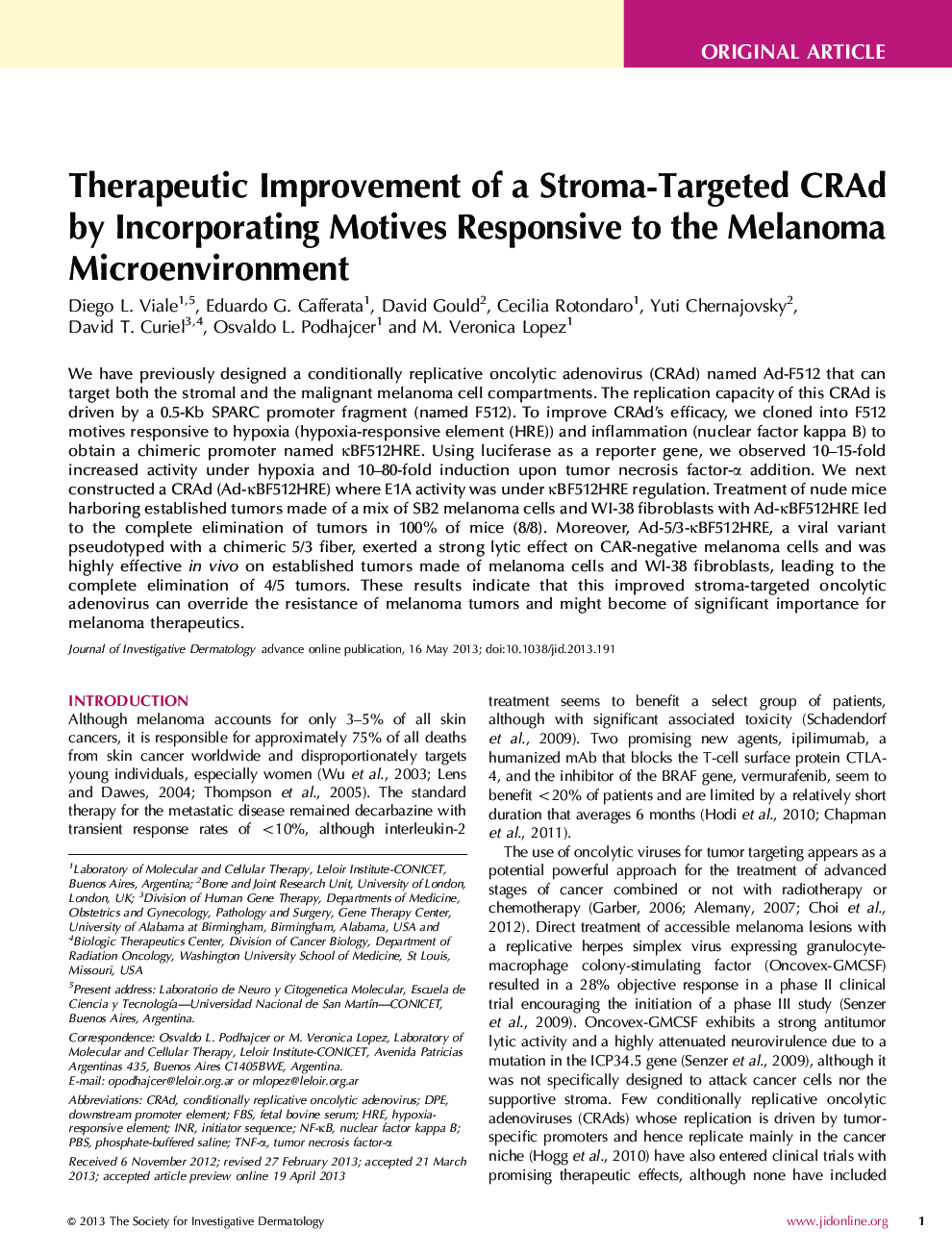| Article ID | Journal | Published Year | Pages | File Type |
|---|---|---|---|---|
| 6077068 | Journal of Investigative Dermatology | 2013 | 9 Pages |
Abstract
We have previously designed a conditionally replicative oncolytic adenovirus (CRAd) named Ad-F512 that can target both the stromal and the malignant melanoma cell compartments. The replication capacity of this CRAd is driven by a 0.5-Kb SPARC promoter fragment (named F512). To improve CRAd's efficacy, we cloned into F512 motives responsive to hypoxia (hypoxia-responsive element (HRE)) and inflammation (nuclear factor kappa B) to obtain a chimeric promoter named κBF512HRE. Using luciferase as a reporter gene, we observed 10-15-fold increased activity under hypoxia and 10-80-fold induction upon tumor necrosis factor-α addition. We next constructed a CRAd (Ad-κBF512HRE) where E1A activity was under κBF512HRE regulation. Treatment of nude mice harboring established tumors made of a mix of SB2 melanoma cells and WI-38 fibroblasts with Ad-κBF512HRE led to the complete elimination of tumors in 100% of mice (8/8). Moreover, Ad-5/3-κBF512HRE, a viral variant pseudotyped with a chimeric 5/3 fiber, exerted a strong lytic effect on CAR-negative melanoma cells and was highly effective in vivo on established tumors made of melanoma cells and WI-38 fibroblasts, leading to the complete elimination of 4/5 tumors. These results indicate that this improved stroma-targeted oncolytic adenovirus can override the resistance of melanoma tumors and might become of significant importance for melanoma therapeutics.
Related Topics
Health Sciences
Medicine and Dentistry
Dermatology
Authors
Diego L. Viale, Eduardo G. Cafferata, David Gould, Cecilia Rotondaro, Yuti Chernajovsky, David T. Curiel, Osvaldo L. Podhajcer, M. Veronica Lopez,
